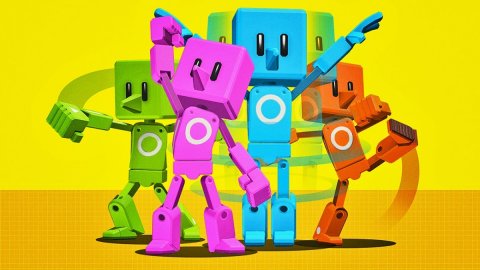Video game laboratory, our creation

Video game laboratory
Let's start with a fairly obvious assumption: creating a video game is not a walk in the park. Whether it's an indie title run by one person or a blockbuster developed by 200 people makes no difference, or better. The differences lie in the scope of the project, in the budget, in the marketing impact, but the conceptual problems underlying a video game are always the same. The study of a mechanic starting from an idea, is the first gigantic step that all developers must overcome and, unfortunately, there are no technical / artistic sectors capable of supporting an entire project if the foundations of the same are not solid.In short: inventing and creating a video game is not easy, especially if we do not launch ourselves into the company with a correct conceptual approach. Playing a lot, reading and getting information is certainly a great way to approach the world of development, but trying your hand at the right tools is even better. Here comes to our rescue Videogame Laboratory, a huge toy box that not only leaves us players a lot of freedom in creating small playful experiences, but above all guides us first through a series of tutorials that introduce the main concepts of development. We at sportsgaming.win about video games talk about and write a lot, so we asked ourselves: will we also be able to develop one? Find out with us in this article, where we will tell you what we have combined with Videogames Laboratory.
Initial Ideas
"speed race" immediately refers to a racing game The ideas were many, the ideas provided even more: the temptation, we admit, was to launch various crazy projects. Fortunately, the wisest neuron in our consciousness suggested that we keep things simple, letting us be influenced by suggestions ... but remaining humble.So we started from a concept, the "speed race", and we thought about how to make it more interesting than we can instinctively expect. The mind of the inveterate gamer, combining the words race and speed, immediately brings back to racing games, those with a circuit, vehicles and a record to beat. So how to interpret the concept excluding the sporting element? With hindsight, if we had made a toy car game, we would have been less exhausted!
The development
Our creation in the Videogame Laboratory We have therefore created a three-dimensional space where every second, coins appear to collect: the winner is the one who retrieves them in the shortest time possible. We started off by building the room in which our character moves and collects the coins. The second step was to create a coin, customizing it by inserting the sportsgaming.win logo through a Nodon Reason.Other essential Nodons are linked to the rotatable object: Sound, Destruction sensor, Constant and Teleportation Entry Settings . The former serve to give a small sound effect to the coin, the animation of destruction once collected and its rotation in place.
If there is an entrance there is clearly also a teleportation exit, positioned in the room of the level. The Nodon Teleportation is in turn linked not only to the cylindrical object, the coin, but also to a network of Constant Nodon and Comparison that refer to a Nodon Chronometer: this Nodon network allows the coins to appear in the game area every second one at a time. We would have liked to add an element of extra randomness but, very trivially, we were unable to activate a variable that "told" the game to use all the coins from 1 to 8 without repeating them (once we happened to stumble upon a bug that made impossible to win: the game in the 60 seconds available, had not spawned the last coin). As we said: let's remain humble!
After having thrown all the nodons and making sure that the coins appeared correctly, all that remained was to create the two boards present in the level, the first with a countdown of the time available and the more with the collected coins counter
5 indispensable Nodons
Nodon card Comparison from Nodonpedia To build our speed race we clearly used many Nodons but 5 of these proved to be indispensable: Person, Cylindrical Object, Comparison, Counter and Stopwatch. The first two are easy to understand why they were so important, given that they are respectively the protagonist and the aim of the game; it must be said, however, that without the last three we would not have been able to complete our level anyway. Counter was the Nodon that allowed us to keep in memory the score, essential for the purpose of the challenge, and Cronometro was an essential Nodon since we were creating a speed race ... and there is no time trial without a healthy ticking that marks the seconds that pass!But the real game changer, in the true sense of the word, is the Nodon Comparison. In the description of the Nodon we can read "I compare two numbers based on conditions decided by you", and among the advice "This Nodon compares two input signals, if two values meet a given condition, the Nodon generates a 1.0 signal". We used it to make a certain coin appear at a certain time within the seconds available in the stopwatch. Paragone is perhaps one of the most interesting Nodons because it is very close to the logic of the computer programming language, in particular to the IF conditional construct. It is perhaps not the most intuitive Nodon to use but it is certainly one of the most instructive.
Now we want to know what you sportsgaming.win readers would have done! G 001 KGV RBK is the code to download our game: let us know if you have any observations to make to our project and, if you have created them yourself, share the code below in the comments.
Did you notice errors?